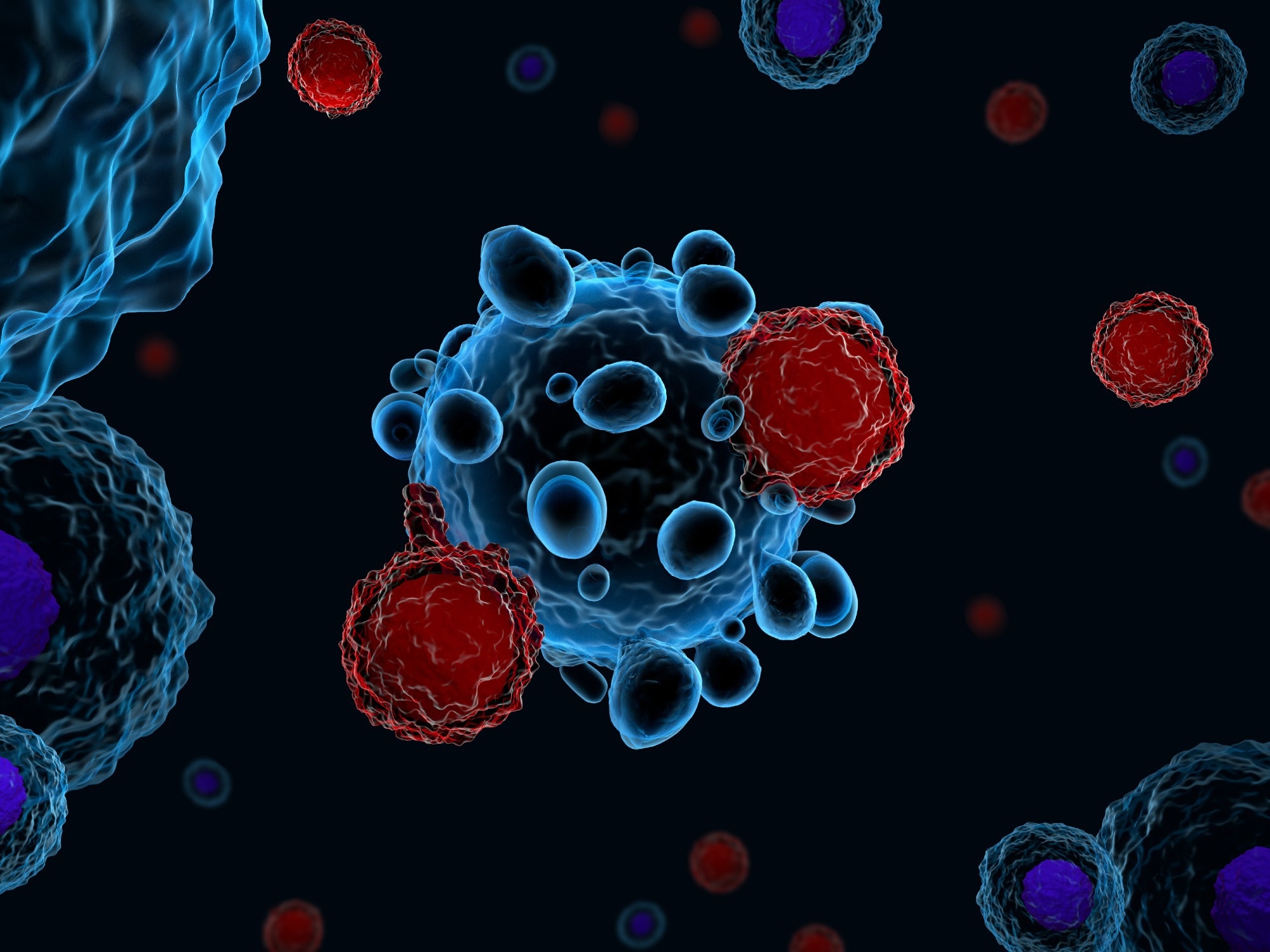Hypertension is among the most prevalent non-transmittable ailments on the earth, with 29% of the world’s inhabitants anticipated to undergo from the situation by 2025. Regardless of substantial advances in anti-hypertensive interventions, a majority of sufferers proceed to undergo from the situation’s comorbidities, suggesting that conventional interventions fail to focus on the foundation explanation for hypertension.
In a current evaluation printed within the journal Nature Critiques Nephrology, researchers collate and focus on a rising physique of literature investigating the function of immune cells in hypertension’s pathogenesis and development. They spotlight that hypertension arises from continual, dysregulated irritation attributable to numerous immune cells, each adaptive and innate. Encouragingly, this evaluation means that immune responses, and by extension hypertension, could also be amenable to future therapeutic interventions. Nonetheless, warning should be exercised whereas figuring out key antigens and immune regulatory nodes to forestall compromising sufferers’ pure immune defenses.
 Evaluate: Immune mechanisms within the pathophysiology of hypertension. Picture Credit score: Meletios Verras / Shutterstock
Evaluate: Immune mechanisms within the pathophysiology of hypertension. Picture Credit score: Meletios Verras / Shutterstock
What do we all know concerning the pathophysiology of hypertension?
Hypertension is a long-term, non-transmissible medical situation characterised by abnormally hypertension (BP). The situation represents a rising healthcare concern, with greater than 26% of the world’s inhabitants (972 million people) estimated to undergo from hypertension, with this prevalence anticipated to rise to 29% by 2025. In America, virtually half the grownup inhabitants is reported to be residing with hypertension, however regardless of the illness’s excessive prevalence, the etiology of the illness is hitherto poorly understood.
Cytokines and immune cells have been related to hypertension for a few years. Historically, nonetheless, these entities have been assumed to be harmless bystanders throughout hypertension, with their direct involvement within the pathogenesis and development of the situation solely not too long ago postulated and investigated. Consequently, nearly all of hypertension sufferers both don’t reply to hypertension interventions (no noticed reductions in BP) or, when blood stress reductions are achieved, retain their residual dangers of cardiovascular ailments (CVDs) and organ injury.
In regards to the evaluation
The current evaluation collates over 130 publications to synthesize present information on the associations between immune cells and hypertension. It discusses the roles of adaptive and innate immune cells in human and murine hypertension, the identified mechanism by way of which these entities set off or promote hypertension (plasticity and reminiscence), and literature on autoimmunity and immune checkpoint therapies that elucidate the pathways of immune activation and irritation central to phenotypic hypertension.
Innate immune cells – sorts and roles in hypertension
Innate immune cells signify the physique’s first line of protection towards numerous overseas (probably pathogenic) entities, together with micro organism and viruses. Not like adaptive immune cells, they supply speedy but non-specific immunity throughout pathogenic invasions or tissue injury. These cells comprise monocytes, dendritic cells (DCs), neutrophils, and macrophages and have the secondary operate of activating the adaptive immune system.
Analysis has implicated macrophages, particularly these infiltrating the kidneys, in elevated BP, renal fibrosis, and renal harm. Monocytes, the precursors of each macrophages and DCs, are discovered to be phenotypically altered (dysregulated) in hypertension sufferers, leading to extended and uncontrolled pro-inflammatory responses. DCs carry out antigen-presenting features, thereby appearing because the hyperlink between the innate and adaptive immune methods. In murine hypertension fashions, nonetheless, costimulatory molecules (e.g., CD80 and CD86) are considerably upregulated, suggesting that the mechanistic underpinnings of hypertension could also be from particular antigen-mediated inflammatory responses as an alternative of non-specific inflammatory occasions.
Neutrophils and mast cells, the 2 remaining pillars of innate immunity, have restricted analysis highlighting their function in hypertension pathogenesis. Nonetheless, this preliminary analysis into neutrophils has revealed that hypertension sufferers show elevated ranges of superoxide anions in comparison with wholesome people. These superoxides have been related to NET formation (NETosis) and cytokines (interleukin 17A [IL-17A]), each of that are identified to set off and promote irritation.
Adaptive immune cells
Adaptive immune cells are primarily comprised of T and B cells. Research on murine fashions (Rag1-/-), notably these by Guzik et al., have established the affiliation between T cells and hypertension. Human fashions have furthered our understanding of the underlying mechanisms governing these associations – people with hypertension displayed a rise in reminiscence CD8+ pro-inflammatory T cells, notably these expressing markers of immunosenescence.
“Though these research have established a key pathogenic function for T cells in hypertension, the impracticality of worldwide T cell ablation as a therapeutic strategy requires a extra granular understanding of the distinct roles of various T cell subsets.”
Future instructions and conclusions
As analysis additional establishes the causative relationship between immune cells and hypertension, parallel analysis on autoimmune ailments suggests {that a} future treatment for hypertension could also be attainable. Immune cells are identified to coordinate with one another in a close-knit built-in system that responds in tandem in a context-dependent method. This means that concentrating on the management facilities (central regulatory nodes) or the signaling antigens concerned in immune responses could also be useful in lowering irritation and, in flip, hypertension. Figuring out these antigens and regulatory nodes would permit for repurposing present anti-autoimmune medication and therapies or growing novel interventions which will carry out considerably higher than standard hypertension administration approaches.
“The problem is to determine these key antigens and regulatory nodes such that the irritation driving the pathophysiology of hypertension could be therapeutically focused with out compromising pure immune defenses.”